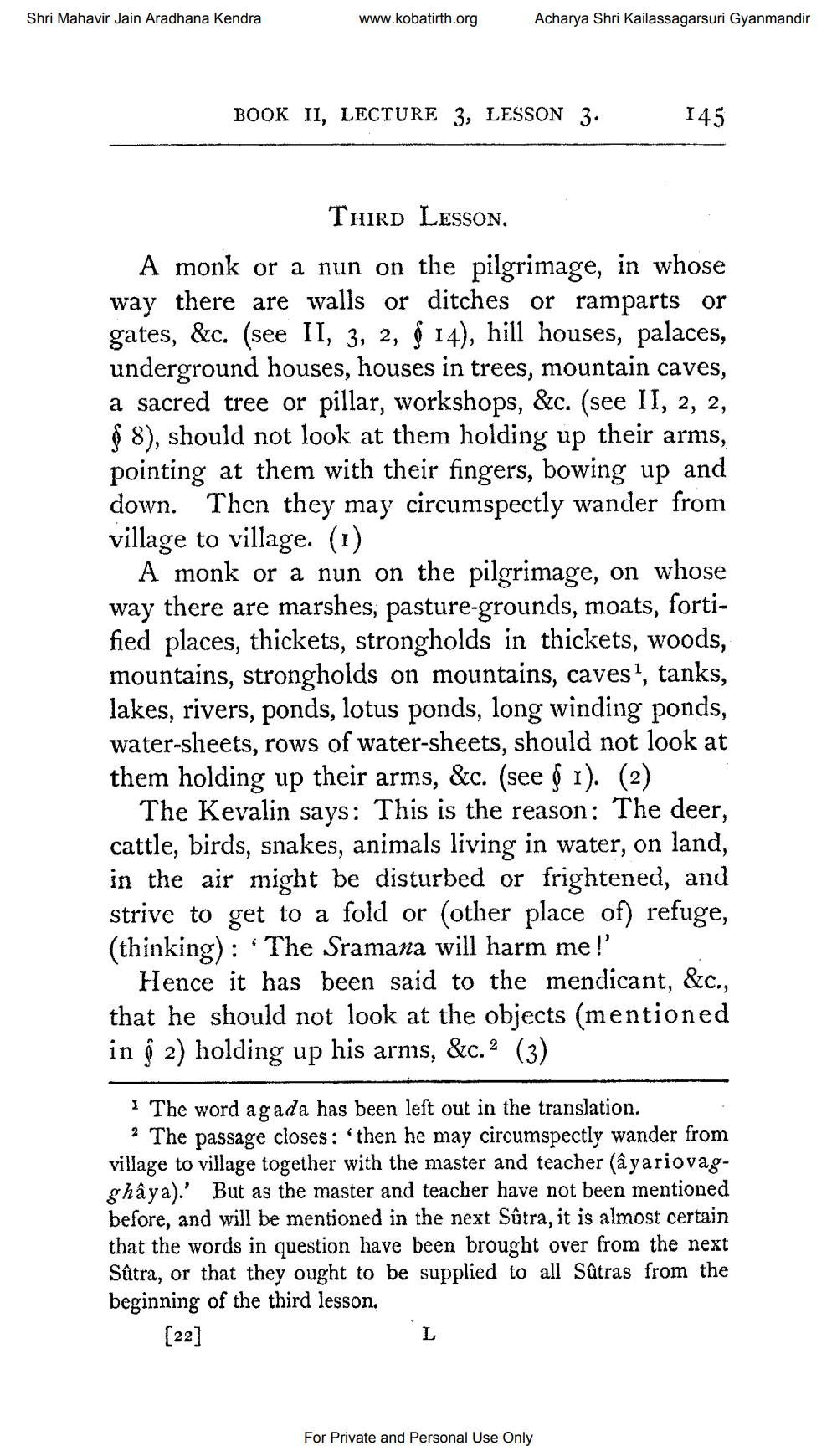________________
Shri Mahavir Jain Aradhana Kendra
www.kobatirth.org
Acharya Shri Kailassagarsuri Gyanmandir
BOOK II, LECTURE 3, LESSON 3.
145
THIRD LESSON A monk or a nun on the pilgrimage, in whose way there are walls or ditches or ramparts or gates, &c. (see II, 3, 2, Ø 14), hill houses, palaces, underground houses, houses in trees, mountain caves, a sacred tree or pillar, workshops, &c. (see II, 2, 2, $ 8), should not look at them holding up their arms, pointing at them with their fingers, bowing up and down. Then they may circumspectly wander from village to village. (1)
A monk or a nun on the pilgrimage, on whose way there are marshes, pasture-grounds, moats, fortified places, thickets, strongholds in thickets, woods, mountains, strongholds on mountains, caves", tanks, lakes, rivers, ponds, lotus ponds, long winding ponds, water-sheets, rows of water-sheets, should not look at them holding up their arms, &c. (see § 1). (2)
The Kevalin says: This is the reason: The deer, cattle, birds, snakes, animals living in water, on land, in the air might be disturbed or frightened, and strive to get to a fold or other place of refuge, (thinking) : 'The Sramana will harm me!'
Hence it has been said to the mendicant, &c., that he should not look at the objects (mentioned in © 2) holding up his arms, &c. 2 (3)
The word ag ada has been left out in the translation. 2 The passage closes : 'then he may circumspectly wander from village to village together with the master and teacher (âyariovagghầya).' But as the master and teacher have not been mentioned before, and will be mentioned in the next Sûtra, it is almost certain that the words in question have been brought over from the next Sätra, or that they ought to be supplied to all Sätras from the beginning of the third lesson.
[22]
For Private and Personal Use Only




